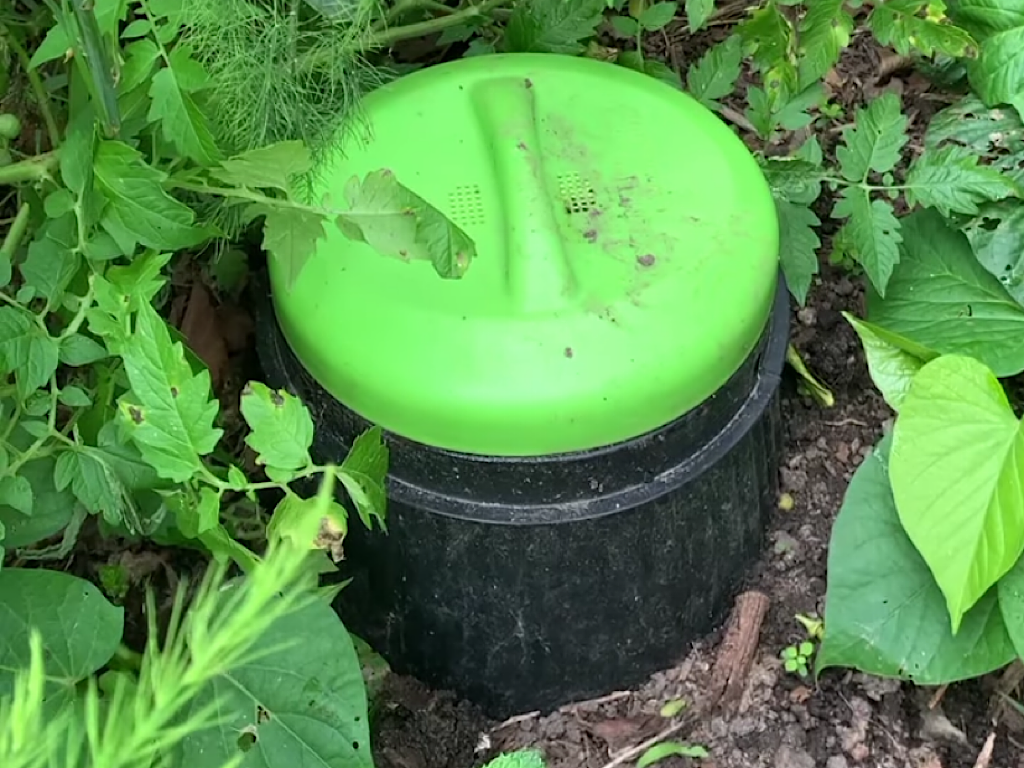In ground worm farms – a composting method for the time poor gardener
How do you find the time to maintain a compost heap when you don’t even have the time to do the fun stuff in your garden? This is an increasing situation I am seeing with gardeners in urban areas. There is also a lack of space for the traditional compost heap. I commonly see people throwing their kitchen scraps in the general rubbish bin and the reason always given is that composting is just too hard and too much work.
I have spent years thinking and experimenting with composting and how to tailor methods that will suit every gardener’s situation and I think there is a perfect solution for the time poor gardener – the in ground worm farm. The simplest composting solution of all is to just dig a hole in the soil and bury your kitchen scraps, the natural earthworm population breeds up and consumes what you have buried. However, the advantage of an in ground worm farm is that you can create a micro environment that allows you to introduce worms that are better adapted to rapid feeding such as tiger and red worms and thus speeds up the composting process.
The advantages of in ground worm farms are numerous-
• Unlike above ground worm farms the body of the worm farm is insulated from temperature and moisture fluctuations leading to a more stable environment for the worms that can save them from extreme heat and cold.
• Unlike above ground worm farms and most alternative composting methods the nutrients and humus created goes straight into the ground either by washing into the soil below or by the worms carrying it out through the holes in the worm farm that are below soil level.
• As the worms move in and out of the worm farm they cultivate and aerate your soil, largely alleviating the need to cultivate.
• An in ground worm farm never needs cleaning out because if it ever reaches capacity you simply extract it from the soil and move it to a new position. Any uncomposted material left behind will continue to break down without any further intervention. It is a good idea to transfer some of the worm rich material under the surface (that will also likely contain worm eggs) to the re-installed worm farm in its new position.
• Apart from adding the food they are virtually maintenance free as the worms can carry most of the organic matter out into the soil around them thereby creating a ‘self-cleaning’ system
An in ground worm farm is a very simple thing to create and can be easily constructed from an old bucket or piece of PVC drainage pipe. The most important thing is to use material that has a reasonably large diameter. Ideally, a pipe should be at least 100mm in diameter to achieve a critical mass of organic matter that does not dry out too quickly, something that helps sustain worm populations in my observations. An old bucket would also generally be of suitable diameter but you may need to check that it will not perish or crack up if you want reasonable longevity for your worm farm.
An old length of PVC drain pipe is an ideal material to use as it is formulated to last a long time and the wider the better within reason, with a diameter of 150mm being close to optimal in my experience. A cylindrical shape for your in ground worm farm works well terms of being able to easily extract it from the soil in order to be able to move it to different positions around the garden. It is also a very good idea to have a lid on top of the unit to keep out vermin.
There are commercially available in ground units available such as the Australian made Tumbleweed Worm Buffet (pictured above). This useful product is easy to assemble and install and works extremely well, particularly as a waste disposal unit. The lid twists on securely so that vermin such as rats can’t get at the scraps or the worms….I have found that rodents like to snack on worms if they can get to them. When fully assembled it resembles a science fiction hybrid somewhere between a Darth Vader mask and a Dr Who dalek, but don’t let this put you off , as once it is buried in the soil ready to go all you see is a small black lid. The lid is removed to add all your kitchen scraps, but make sure you also add some sort of fibrous material such as chopped straw occasionally to add some aeration to the pile inside the Worm Feast.
Whether you use a commercial unit or one you construct yourself, the in ground worm farm is an extremely simple and ultra-effective composting solution that will dramatically reduce your organic waste stream if you are currently disposing of it in the bin. The only word of extra advice I would give is to ensure that you add some fibrous material such as shredded cardboard or chopped straw to your kitchen scraps to ensure the worms have adequate oxygen to breathe. You will be pleasantly surprised by the extra growth in your garden, and can also take pride in diverting all that carbon from going into landfill (and creating the greenhouse gas methane) to your soil, where it is doing a power of good for your plants. This is one of the simplest and best things you can do every single day to help the environment at an individual level. If you are using it to grow your own food, you are doubling your environmental goodness, plus enriching your health with ultra fresh vegetables and fruit!
Buy your own Worm Buffet in ground worm farm online here >>>>>>




